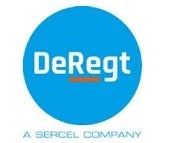Aker Solutions’ recent proposition to DeRegt was an interesting one: can 25-year-old cables be reverse-engineered for use over the next half-century?
Aker is responsible for the maintenance of a floating concrete tension-leg platform, installed over a subsea template with 56 well slots.
Named Heidrun, the rig produces oil and gas from a depth of 2,300 metres and is about 200km off the Norwegian coast.
Aker Solutions sales manager Peter Brussee said: “25 years ago, nothing was digitally stored, so you basically have to reinvent the wheel, and we did.”
DeRegt spoke to Roger Sand at Aker Solutions to find out more about this unique project while seeking an answer for the initial question.
Can you talk us through the project?
The question that came to us was to look into the monitoring legs on the Heidrun platform. It was originally installed in the 1990s and is anchored up with 16 load cells and signal cables for the tension legs.
Each is fitted with three load cells and one single cable, ranging from 60m down to 300m in length. The tension legs have been operational since the installation date. Concerns arose about water regress, so we wanted to look into the possibility to replace the load cells and signal cables.
Where did the information for the existing cabling come from, what did it look like?
We started off with a few weeks of wildcard searching through the documentation database, and because the project was carried out such a long time ago, the digital files were not complete. So we even ended up having to go through a hardcopy archive in their basement. We found a lot of documents with DeRegt’s name on it, so that’s how we got in touch. They had to more or less design the cable again from scratch.
What were the particular challenges?
There was quite a lot of detective work throughout because of the lack of digitisation and because we were working with an existing platform. The documentation package ended up being something like 2000 pages. This had never been done anywhere in the world; changing 60m tension legs on an existing platform. The load cells and the cables are submerged, which brings its own challenges, but we overcame them.
Can you remember a moment where you thought ‘This might not work’? Do you remember how you overcame that?
No, not really. The engineering that had been done when Heidrun was built is quite impressive. We are talking about [the] subsea tool on 19t that operates with only a 2-3mm clearance. Also, the quality that the suppliers have delivered has been remarkable.
Why did you choose to work with DeRegt and would you choose them again in future?
Like most companies, we have a policy where we have to ask multiple suppliers. So we did put out a tender, but DeRegt was the one that gave us the correct design.
The main reason is that working with DeRegt has been problem-free. They have delivered on every angle; engineering, delivery, they have been on time. The information has been great. If there’s any problems at all, we have been informed right away.
They have proven that they can make this cable. We have full confidence that this cable system will work faultlessly for the next 50-year life cycle of this platform. In fact, we are already working with DeRegt on a new order right now.

